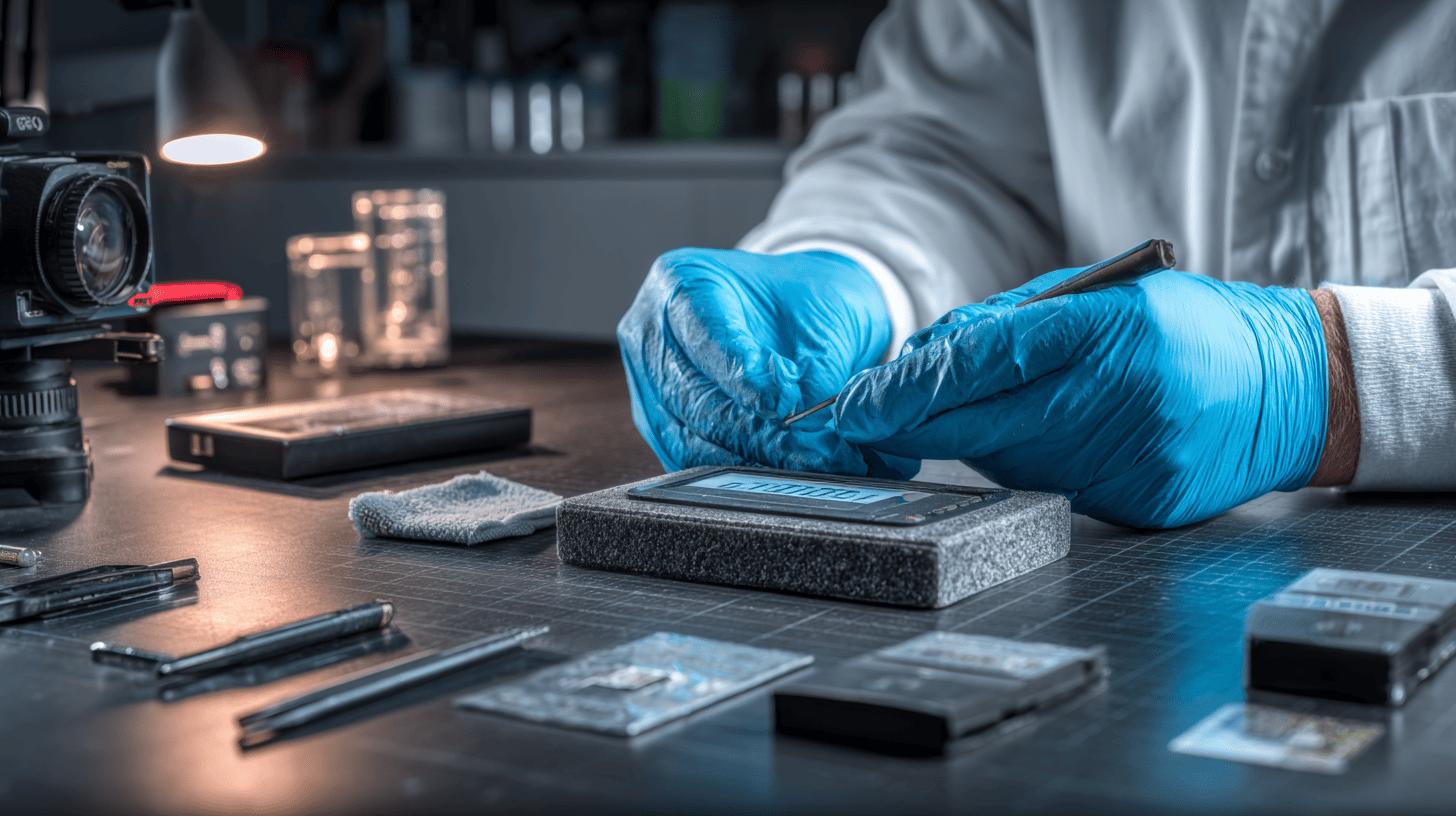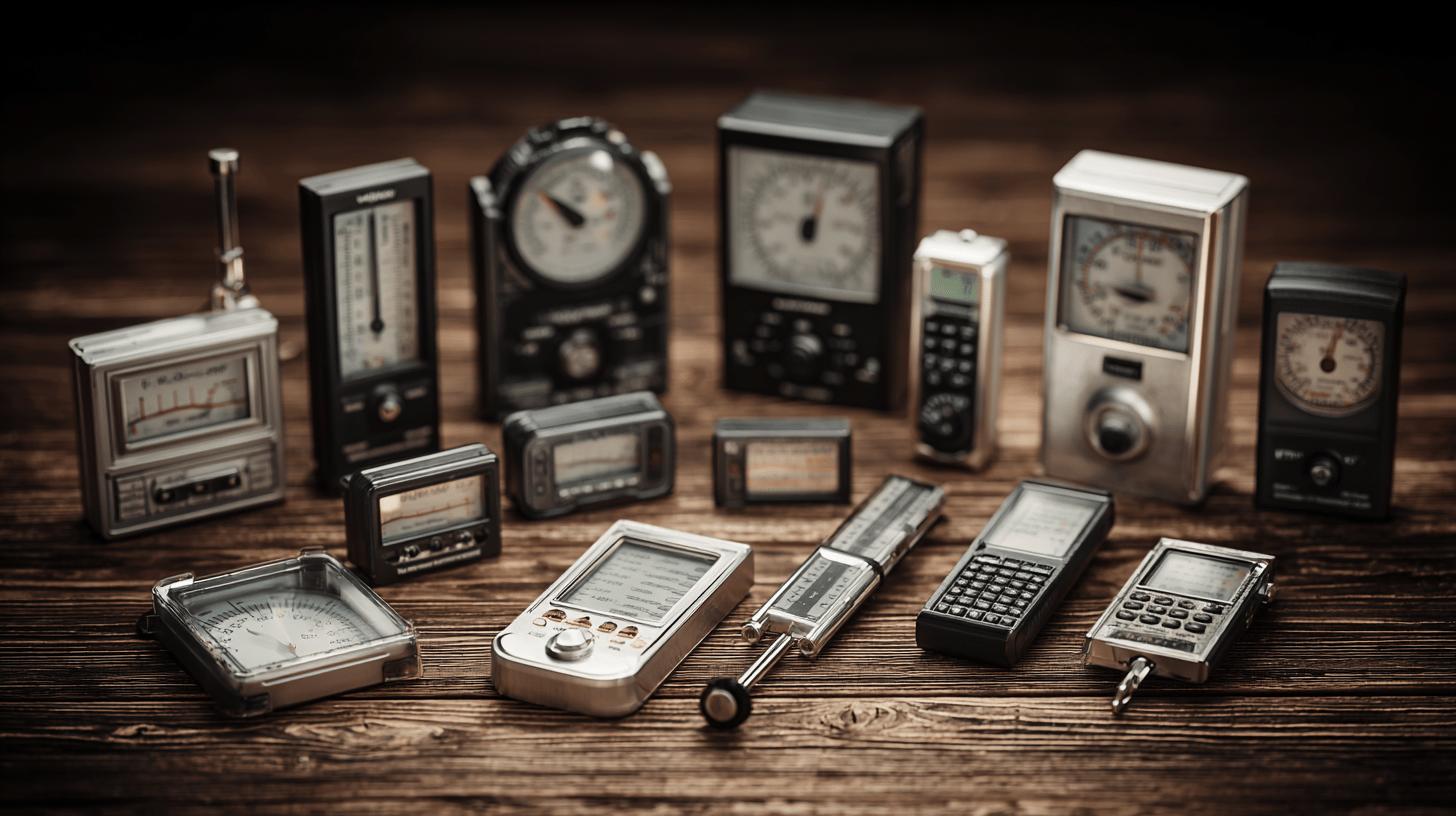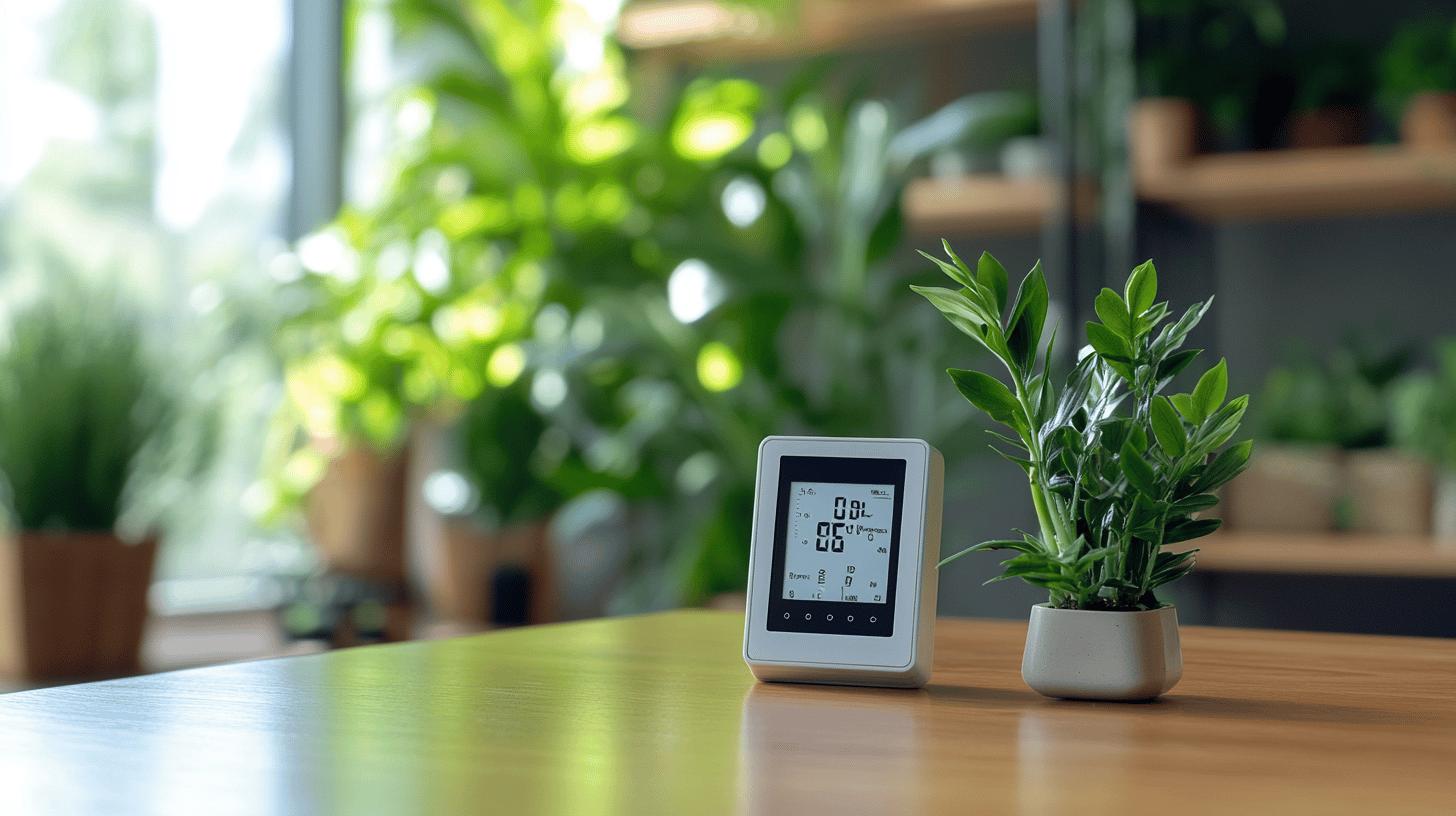Have you ever wondered why the humidity levels displayed on your hygrometer appear inconsistent or unreliable? Accurate humidity readings are not just a matter of technology but also meticulous practice. Regular calibration is crucial for optimal performance, akin to tuning a musical instrument to ensure harmony. Without calibration, deviations due to storage or transport may lead to inaccurate data. This post explores best practices for maintaining precise humidity readings, ensuring your hygrometer performs as intended and prolongs its operational lifespan. Dive into our guidelines to master hygrometer accuracy and avoid unexpected surprises in your humidity measurements.
Understanding Hygrometer Calibration for Accurate Readings
Calibration of hygrometers is essential for ensuring precise humidity readings. Regular calibration is crucial because hygrometers can deviate from accurate measurements due to factors such as storage, vibration during transport, or natural aging processes. Calibration maintains the device within manufacturer specifications, thereby guaranteeing reliable performance and accurate measurements.
Common calibration methods include:
- Damp Pack Method: This technique involves placing the hygrometer in a damp cloth or plastic bag for at least 30 minutes to achieve a reading in the 95-98% relative humidity range. This method is straightforward and effective for quick calibration checks.
- Salt Solution Method: By using a saturated salt solution in a closed, temperature-constant environment, a stable humidity level is established for comparison. This method provides a more controlled setting for calibration, ensuring greater precision.
.
Regular calibration intervals are essential for sustained accuracy in hygrometers. It is recommended to calibrate devices at regular intervals, particularly if the hygrometer is used in environments with fluctuating conditions. Establishing a consistent calibration schedule helps in identifying any deviations early, allowing for timely corrections. By adhering to regular calibration intervals, users can ensure their hygrometers continue to provide dependable humidity readings, crucial across various applications such as pharmaceuticals, food processing, and more.
Optimal Placement of Hygrometers for Consistent Measurements
Proper placement of hygrometers is critical for obtaining consistent and accurate humidity readings. Incorrect positioning can lead to skewed data, which may affect decision-making processes in environments where precise humidity control is crucial. To ensure reliable measurements, it is essential to position hygrometers in locations that reflect the true ambient conditions without interference from external factors.
- Place the hygrometer in a central location within the room to capture a representative sample of the overall humidity level.
- Ensure the device is away from direct sunlight, which can cause temperature fluctuations that affect readings.
- Avoid positioning near windows or heat sources, as these can create artificial humidity levels and lead to inaccurate data.
- Position the hygrometer at least five feet above the ground to ensure it measures the air sample accurately, avoiding ground-level variations.
- Keep the device away from air vents, fans, or humidifiers to prevent exposure to artificial airflow or localised humidity changes.
- Avoid placing the hygrometer in areas with high traffic or frequent door openings, which can introduce sudden changes in humidity levels.
.
Correct positioning significantly impacts the accuracy of hygrometer readings. When placed strategically, hygrometers can provide true reflections of the ambient environment, enabling better control and management of humidity levels. Inconsistent or incorrect placement can lead to data that do not accurately represent the actual conditions, potentially impacting processes in industries like pharmaceuticals, agriculture, or food processing. By adhering to best placement practices, users can ensure that their hygrometers deliver dependable readings essential for maintaining optimal environmental conditions.
Maintenance Practices for Long-Term Hygrometer Accuracy

Regular maintenance is pivotal for maintaining hygrometer accuracy and ensuring reliable humidity readings. Routine cleaning is essential to prevent dust and debris from interfering with sensor performance. Dust accumulation can obstruct sensor functionality, leading to inaccurate readings. Therefore, incorporating cleaning into a regular maintenance schedule is vital. Additionally, checking battery levels is crucial, as low power can result in erratic readings or device failure. It is advisable to replace batteries according to the manufacturer’s recommendations to avoid unexpected inaccuracies.
When inaccuracies arise, troubleshooting steps can help restore optimal performance. Begin by relocating the hygrometer to a different position, as environmental factors can influence readings. If relocation does not resolve the issue, recalibration may be necessary. Regular calibration, as previously discussed, ensures the device remains within manufacturer specifications. For persistent problems, inspect the hygrometer for physical damage or sensor obstruction. By systematically addressing these potential issues, users can maintain their hygrometers’ accuracy, ensuring they deliver consistent and precise humidity readings.
Environmental Factors Affecting Relative Humidity Readings
Temperature significantly impacts relative humidity readings. How does temperature affect hygrometer readings? Higher temperatures can increase the capacity of air to hold moisture, resulting in lower relative humidity levels, while cooler temperatures decrease air’s moisture capacity, increasing relative humidity. Therefore, fluctuations in temperature can lead to inconsistent humidity readings if not accounted for. To obtain accurate data, it is crucial to consider the ambient temperature alongside humidity measurements. Using a combined thermometer-hygrometer can provide comprehensive insights into both temperature and humidity levels, allowing for more precise environmental monitoring.
When monitoring humidity, several environmental factors should be considered:
- Temperature Changes: Rapid temperature fluctuations can distort humidity readings, necessitating continuous monitoring for accuracy.
- Seasonal Variations: Humidity levels can vary significantly with changing seasons. Understanding typical seasonal humidity patterns in your area can aid in interpreting readings correctly.
- Proximity to Heat Sources: Devices placed near heat sources may display skewed data due to localised temperature increases.
- Airflow Patterns: Strong airflow from vents or fans can create artificial humidity conditions, affecting readings.
.
Mitigating environmental impacts on hygrometer readings involves strategic placement and the use of appropriate tools. Employing a combined thermometer-hygrometer allows for simultaneous monitoring of temperature and humidity, offering a clearer picture of the environment. Additionally, situating hygrometers away from direct sunlight, heat sources, and airflow disruptions can help reduce inaccuracies. Regular calibration, as previously mentioned, ensures that devices remain accurate, aligning with manufacturer specifications despite environmental challenges. Understanding and managing these factors is essential for maintaining reliable humidity data, crucial in sectors such as agriculture, pharmaceuticals, and food processing.
Troubleshooting Common Hygrometer Issues
Hygrometer users often encounter inaccurate readings, which can stem from several sources. What are common causes of inaccurate hygrometer readings? Low battery levels, calibration neglect, and improper placement are frequent culprits. Ensuring accurate humidity measurements requires addressing these issues promptly. A hygrometer with a depleted battery may produce erratic or false readings, while neglecting regular calibration can lead to deviations from true humidity levels. Similarly, improper placement, such as near heat sources or direct sunlight, can distort measurements, impacting data reliability.
- Check Battery Levels: Ensure the hygrometer has adequate power, as low batteries can cause erratic readings.
- Recalibration: Perform regular recalibration to maintain measurement accuracy and align with manufacturer specifications.
- Device Relocation: If readings remain inconsistent, try relocating the hygrometer to avoid environmental interferences like heat sources or direct airflow.
- Inspect for Physical Damage: Examine the device for any physical damage that might affect sensor performance.
- Upgrade to Digital: Consider using a digital hygrometer, which offers advanced features like data logging and remote monitoring for enhanced accuracy.
.
By systematically addressing these potential issues, users can ensure their hygrometers provide precise and dependable humidity readings, essential for various applications requiring accurate environmental monitoring.
Selecting the Right Hygrometer for Your Needs

When selecting the right hygrometer, understanding the differences between digital and analogue models is crucial. Digital hygrometers are equipped with advanced features such as data logging and remote monitoring, making them suitable for applications requiring detailed humidity tracking. These devices often provide higher precision and are ideal for environments where accurate data is critical. In contrast, analogue hygrometers offer simplicity and ease of use. However, they may lack the precision and additional functionalities that digital models provide, making them more suitable for general or personal use where high accuracy is not paramount.
| Feature | Digital | Analogue |
|---|---|---|
| Precision | High | Moderate |
| Data Logging | Yes | No |
| Remote Monitoring | Yes | No |
| User Interface | Digital Display | Dial/Needle |
| Ease of Use | Moderate | High |
When choosing a hygrometer, consider the intended use and necessary features. For personal use, where basic humidity readings are sufficient, an analogue hygrometer might be appropriate due to its simplicity and ease of use. For agricultural or industrial applications, where precise data is essential for maintaining optimal conditions, a digital hygrometer with data logging and remote monitoring capabilities is recommended. Assessing the environment and specific requirements will guide you in selecting the most suitable hygrometer, ensuring accurate and reliable humidity measurements.
Final Words
Mastering hygrometer best practices involves understanding calibration, optimal placement, and regular maintenance for accurate relative humidity readings. Calibration, using methods like damp packs or salt solutions, ensures precision. Proper placement away from heat and airflow disruptions further enhances reliability. Maintenance practices, including cleaning and battery checks, support long-term accuracy.
Environmental factors also play a significant role, necessitating awareness of temperature impacts. Troubleshooting techniques, such as recalibration and relocation, address common issues. Selecting the right hygrometer, tailored to individual needs, completes the foundational knowledge for maintaining precise humidity measurements. Implementing these practices guarantees effective and consistent environmental monitoring.
Book moisture survey → Sports Hall Inspection
FAQ
What is the most accurate way to measure relative humidity?
Measuring relative humidity accurately involves using a calibrated digital hygrometer. Ensure it’s positioned properly in a stable environment, and regularly verify its accuracy using calibration methods like salt solutions or damp packs.
How do I make sure my hygrometer is accurate?
To ensure accuracy, regularly calibrate the hygrometer using a hygrometer calibration kit or salt solution method. Maintain a consistent calibration schedule and ensure proper device placement away from environmental interferences.
What is the ideal humidity level for a hygrometer?
Ideal humidity levels vary but typically range from 30% to 50% for indoor environments. Adjustments may be necessary based on specific needs, such as plant cultivation or equipment storage.
How should I calibrate a digital hygrometer?
Calibrate a digital hygrometer by comparing it with a standard using salt solution or damp pack methods. Follow the manufacturer’s instructions closely for precise results and maintain regular calibration intervals.
Should I measure humidity or relative humidity?
Measuring relative humidity is recommended as it provides a context-specific understanding of moisture levels, factoring in temperature fluctuations which can significantly impact measurement accuracy and environmental conditions.
What are humidity calibration salts?
Humidity calibration salts create stable environments that can simulate specific humidity levels, aiding in the accurate calibration of hygrometers. They are essential for laboratory and industrial applications requiring precise humidity control.
How do environmental factors affect relative humidity readings?
Environmental factors like temperature, airflow, and light exposure can significantly impact hygrometer readings. Position your device correctly and account for seasonal temperature variations to ensure consistent and accurate measurements.
What common issues affect hygrometer accuracy?
Common hygrometer issues include low battery levels, poor calibration, and incorrect placement. Ensure routine maintenance, proper placement, and regular recalibration to address accuracy problems and optimise performance.


